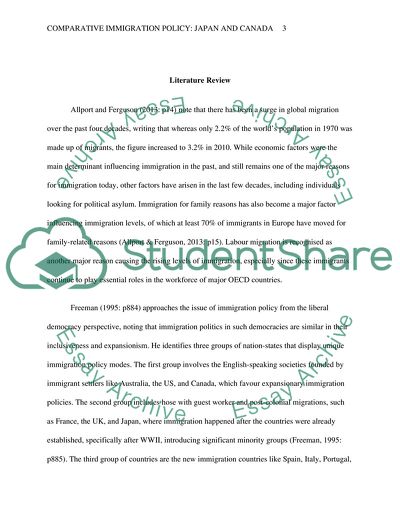Cite this document
(Comparative Immigration Policy: Japan and Canada Coursework Example | Topics and Well Written Essays - 2000 words, n.d.)
Comparative Immigration Policy: Japan and Canada Coursework Example | Topics and Well Written Essays - 2000 words. https://studentshare.org/politics/1867819-compare-and-contrast-immigration-policies-in-two-or-more-countries-which-factors-explain-the-variations
Comparative Immigration Policy: Japan and Canada Coursework Example | Topics and Well Written Essays - 2000 words. https://studentshare.org/politics/1867819-compare-and-contrast-immigration-policies-in-two-or-more-countries-which-factors-explain-the-variations
(Comparative Immigration Policy: Japan and Canada Coursework Example | Topics and Well Written Essays - 2000 Words)
Comparative Immigration Policy: Japan and Canada Coursework Example | Topics and Well Written Essays - 2000 Words. https://studentshare.org/politics/1867819-compare-and-contrast-immigration-policies-in-two-or-more-countries-which-factors-explain-the-variations.
Comparative Immigration Policy: Japan and Canada Coursework Example | Topics and Well Written Essays - 2000 Words. https://studentshare.org/politics/1867819-compare-and-contrast-immigration-policies-in-two-or-more-countries-which-factors-explain-the-variations.
“Comparative Immigration Policy: Japan and Canada Coursework Example | Topics and Well Written Essays - 2000 Words”. https://studentshare.org/politics/1867819-compare-and-contrast-immigration-policies-in-two-or-more-countries-which-factors-explain-the-variations.


